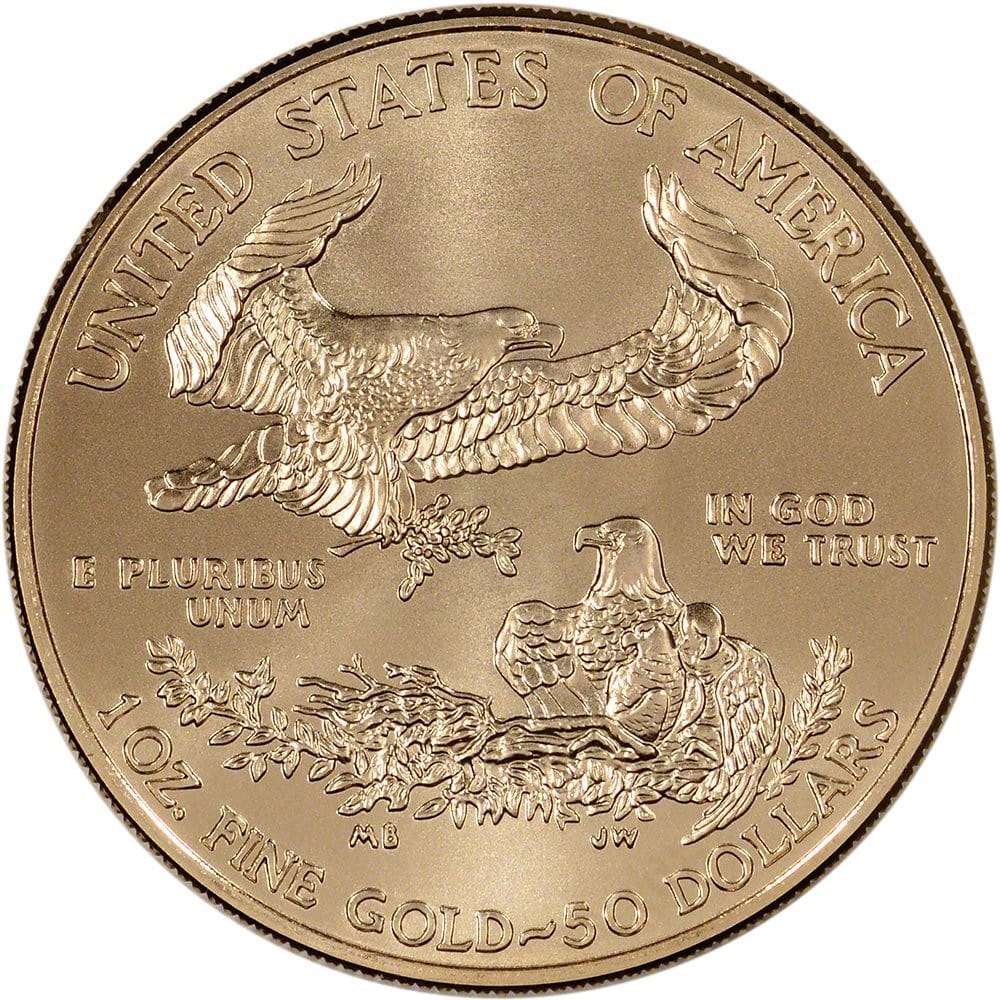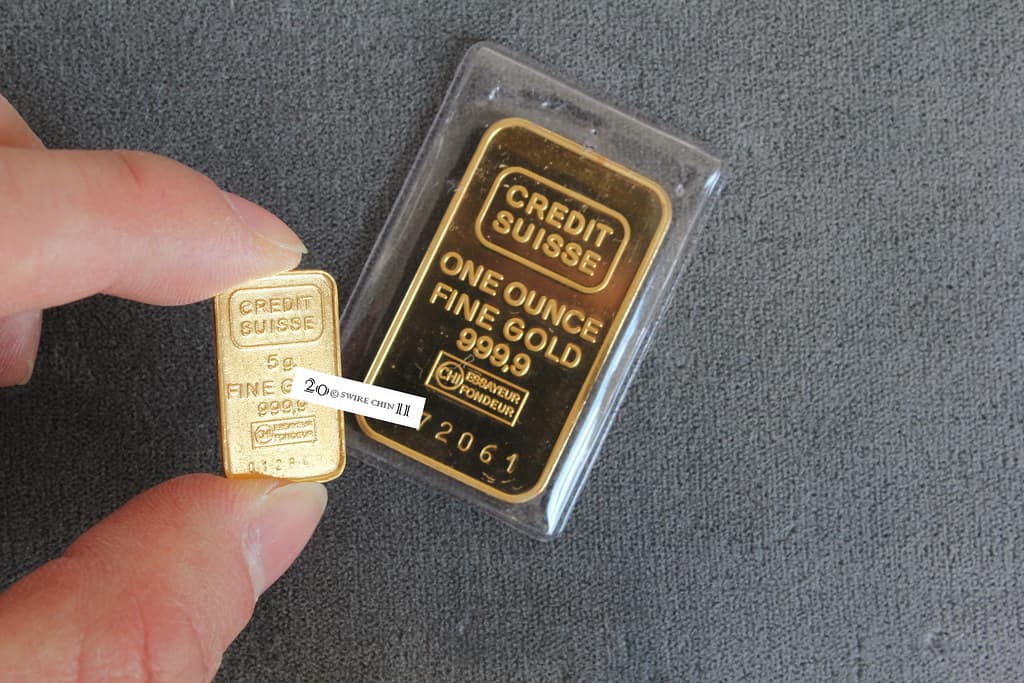The Top 10 Gold Storing Countries
In the dynamic world of finance, gold has stood as an enduring symbol of stability and wealth. Its gleaming allure has fascinated civilizations for centuries, functioning as a universal currency, a symbol of power, and a refuge in times of uncertainty. Today, let's embark on an enlightening journey around the globe, unveiling the top ten countries that hold the most substantial physical gold reserves.
1. United States: The Golden Eagle's Nest

The United States stands atop the list with an astonishing 8,133.5 tons of gold in its vaults, valued at over $400 billion. This colossal reserve represents about 78% of their total foreign reserves, making it a cornerstone of the nation's economic stability. Fort Knox, a name synonymous with impenetrable security, houses the bulk of this glittering treasure.
The United States' vast gold holdings trace back to historical decisions that positioned gold as a fundamental asset for national security. This strategy, rooted in the aftermath of the Great Depression and World War II, aimed to fortify the nation against economic uncertainties. Today, the Golden Eagle's Nest remains a testament to the enduring belief in gold as a bedrock of financial strength.
2. Germany: The Bundesbank Bullion
Germany secures the second position with 3,363 tons of gold. After World War II, during the Cold War era, Germany strategically distributed its gold to other countries for safekeeping. However, recent years have seen a trend of repatriating this precious metal back home, emphasizing Germany's commitment to safeguarding its economic foundation.
The Bundesbank Bullion not only reflects Germany's economic prudence but also its meticulous approach to risk management. The decision to repatriate gold from foreign vaults underscores a shift in perception, mirroring concerns about global economic uncertainties. Germany's actions send a clear signal about the importance of physical possession of gold in times of crisis.
3. Italy: The Roman Reserves
Italy claims the third spot with 2,451 tons of gold reserves, constituting nearly 70% of its total foreign reserves. This significant allocation underscores Italy's deep-rooted belief in gold as a reliable hedge against financial crises, echoing the historical significance of gold in preserving wealth.
The Roman Reserves are a testament to Italy's rich cultural and historical connection with gold. Historically, gold served as a symbol of opulence and stability in the Roman Empire. Today, Italy's commitment to maintaining a substantial gold reserve mirrors a continuation of this tradition, positioning gold as a guardian of economic stability across the ages.
4. France: The Gallic Gold Treasury
France boasts 2,436 tons of gold reserves, aligning closely with Italy but slightly less by weight. With over 60% of its reserves secured in gold, France exemplifies a steadfast commitment to economic stability, showcasing the enduring appeal of gold as a strategic reserve.
The Gallic Gold Treasury, rooted in France's historical legacy, reflects the nation's resilience and pragmatism. France's decision to maintain a substantial gold reserve is a calculated strategy to navigate the complexities of the global economic landscape. As economic uncertainties persist, France's gold holdings serve as a bedrock for maintaining financial sovereignty.
5. Russia: The Siberian Stash
Russia claims the fifth position with 2,299 tons of gold reserves. Remarkably, Russia has strategically increased its gold reserves over the past decade, signaling a deliberate move to reduce dependence on the U.S. dollar and fortify its economic resilience.
The Siberian Stash is emblematic of Russia's evolving economic strategy. The nation's concerted efforts to bolster its gold holdings align with geopolitical shifts and a desire to diversify away from traditional currency reserves. Russia's Siberian Stash not only symbolizes economic prudence but also geopolitical foresight in an era of changing global dynamics.
6. China: The Dragon's Hoard
Despite being the world's largest gold producer, China occupies the sixth position with 1,948 tons of gold reserves. However, speculation abounds that China may be understating its actual gold holdings as part of a broader, long-term economic strategy.
The Dragon's Hoard, nestled in China's economic landscape, signifies a delicate balance between transparency and strategic silence. China's position as the leading gold producer coupled with its gold reserves highlights a nuanced approach to economic planning. The Dragon's Hoard is not just a physical reserve but a symbol of China's strategic maneuvering on the global economic stage.
7. Switzerland: The Alpine Assets

Renowned for its robust banking system, Switzerland holds 1,040 tons of gold reserves. In 2000, Switzerland sold a substantial portion of its gold holdings, yet it has since maintained steady levels, highlighting the nation's strategic approach to managing its gold reserves.
The Alpine Assets, nestled in Switzerland's financial landscape, tell a story of adaptability and strategic decision-making. Switzerland's decision to sell gold in 2000 was a pragmatic response to shifting economic dynamics. However, maintaining a stable reserve afterward signifies a careful calibration of economic strategies, showcasing Switzerland's ability to navigate the complexities of global finance.
8. Japan: The Samurai Stash
Japan secures the eighth position with 765 tons of gold reserves. Despite being susceptible to economic fluctuations and inflationary pressures, Japan's significant gold reserve serves as a vital safety net, contributing to the nation's economic resilience.
The Samurai Stash is an integral part of Japan's economic resilience strategy. In a country marked by periods of economic volatility, the substantial gold reserve provides stability and a safeguard against external shocks. Japan's commitment to maintaining a significant gold reserve is a testament to the belief that diversification is key to weathering economic storms.
9. India: The Subcontinental Storehouse
India claims the ninth spot with 657 tons of gold reserves. While this figure is impressive, it pales in comparison to the estimated 25,000 tons held in private holdings of Indian households, showcasing the cultural affinity for gold in the nation.
The Subcontinental Storehouse reflects India's unique relationship with gold, deeply ingrained in its cultural and economic fabric. Beyond the national reserve, gold holds immense significance for Indian households. The nation's love affair with gold goes beyond economic pragmatism, intertwining with traditions, weddings, and a deep-seated belief in gold as a symbol of prosperity.
10. Netherlands: The Dutch Deposits
Rounding out our top ten is the Netherlands, possessing 612 tons of gold reserves. Following in Germany's footsteps, the Netherlands has engaged in a process of repatriating its overseas-stored gold back home since 2014, aligning with the broader trend of reinforcing national economic foundations.
The Dutch Deposits reflect a strategic alignment with economic trends and global uncertainties. Repatriating gold back to the Netherlands echoes a sentiment of safeguarding economic foundations. The nation's commitment to gold, despite fluctuations in global economic dynamics, underscores the importance of maintaining control over tangible assets.
Gold as a Global Economic Pillar
While these countries undoubtedly stand as titans with substantial physical gold reserves, it's crucial to acknowledge that a nation's economic strength involves a multifaceted analysis beyond bullion bank balances. Gold is just one facet, albeit a significant one, in the intricate tapestry that weaves global economics together.
Gold's historical significance as a store of value and symbol of stability transcends national borders. As we delve deeper into the golden economics of these top gold-holding nations, it becomes evident that gold plays a pivotal role in shaping global economic narratives. Beyond the sheer volume of gold reserves, each country's approach to managing, repatriating, or increasing its gold holdings adds a layer of complexity to the intricate dance of international finance.
Strategic Maneuvers and Broader Economic Trends
The geopolitical landscape is ever-evolving, and as nations strive to secure their economic foundations, gold remains a stalwart ally. Its enduring appeal as a safe-haven asset, a hedge against inflation, and a symbol of economic sovereignty continues to influence the decisions of central banks and governments worldwide.
In the context of the top gold-holding nations, the strategic maneuvers around gold holdings also mirror broader economic trends. The repatriation of gold, the increase in reserves, and the careful management of gold portfolios all signify a delicate balance between tradition and adaptation to contemporary economic realities.
As we conclude our exploration of the top ten countries with the most significant physical gold reserves, it's essential to recognize that gold, while a timeless asset, is not a panacea. Economic strength encompasses a diverse range of factors, including technological innovation, fiscal policies, and global trade dynamics.
While gold serves as a common thread among these nations, the global economic tapestry extends beyond bullion. As we witness the ebb and flow of economic fortunes, it becomes apparent that a holistic approach to economic planning, incorporating a variety of assets and strategies, is vital for long-term stability.
A Personal Fort Knox: Gold for Individuals
While nations hoard and protect their gilded treasures for stability and security reasons, individuals too can draw lessons from this global phenomenon. The concept of a personal ‘Fort Knox' isn't merely metaphorical; it extends to the choices individuals make in safeguarding their financial well-being.

As we navigate a world of economic uncertainties, the allure of gold as a personal investment cannot be overstated. Beyond its historical significance, gold has proven itself as a resilient asset, often maintaining or increasing in value during times of economic turbulence. For individuals seeking to fortify their financial future, considering gold as part of a diversified investment portfolio may offer a layer of protection against the unknown.
Whether in the form of physical gold, gold-backed securities, or precious metal funds, incorporating gold into an investment strategy aligns with the age-old wisdom of preserving wealth. Just as nations diversify their reserves to mitigate risks, individuals can apply similar principles on a smaller scale to build a robust financial foundation.
The Ever-Shining Appeal of Gold
In the grand tapestry of global finance, gold stands as an ever-shining thread, weaving through the economic histories of nations and individuals alike. Its enduring appeal transcends time and borders, symbolizing wealth, stability, and a timeless connection to the intricacies of human civilization.
As we unveil the gold titans and explore their strategic dance with this precious metal, it becomes evident that gold's role in global economics is multi-faceted. It serves as a reserve asset, a strategic hedge, and a symbol of economic sovereignty—a universal language spoken by nations seeking resilience in the face of economic uncertainties.
So, whether you're a central banker safeguarding a nation's economic future or an individual navigating the complexities of personal finance, the gleaming allure of gold remains undiminished. As the world continues its economic journey, the story of gold, with its shimmering resilience, will undoubtedly endure, leaving an indelible mark on the pages of financial history.
May your financial path be as enduring and prosperous as the timeless appeal of gold.
Best regards,
Chris



